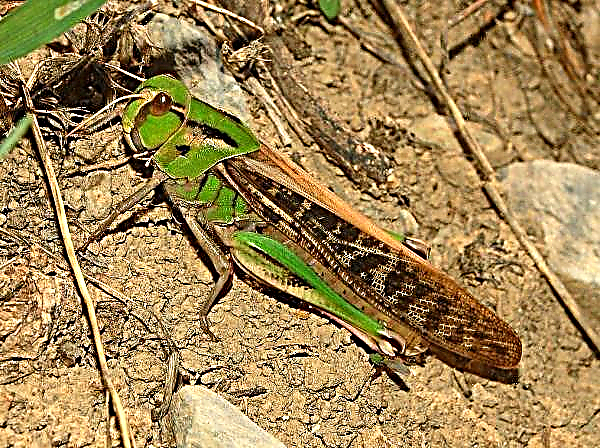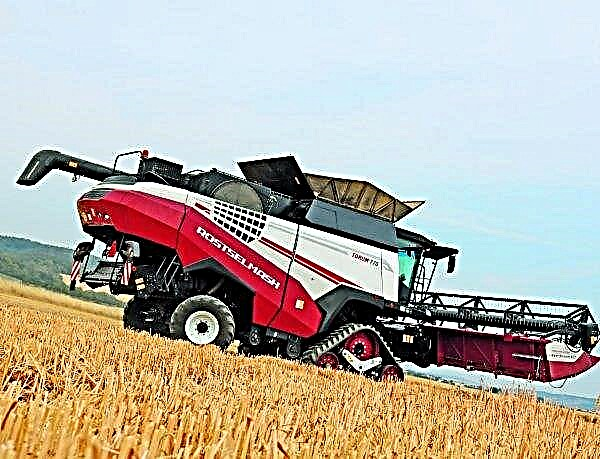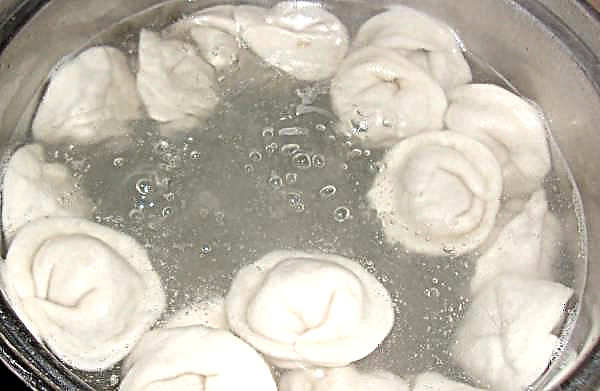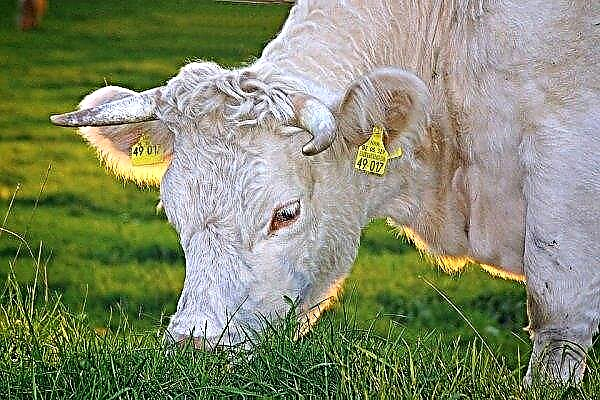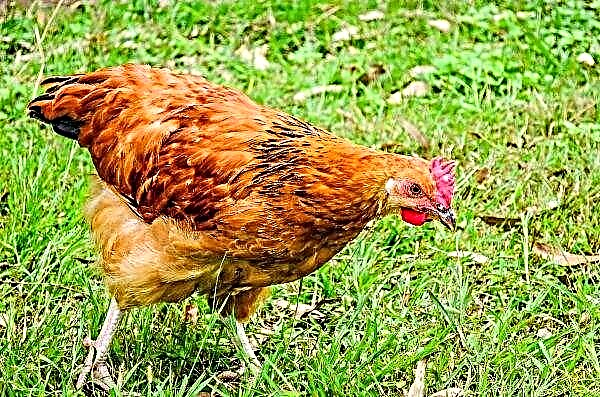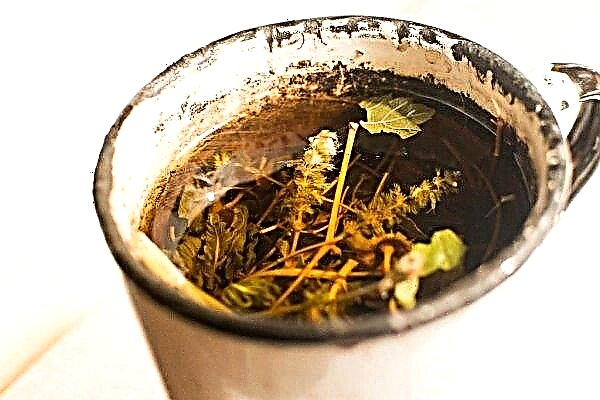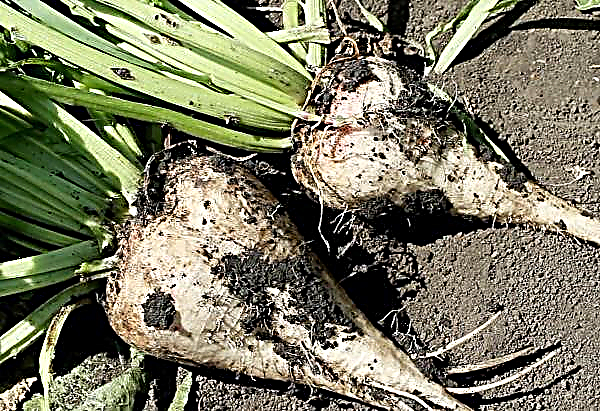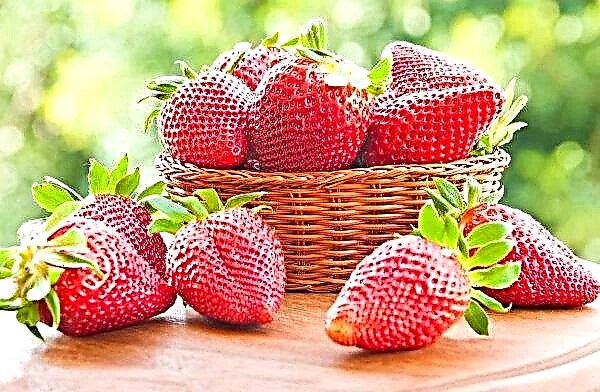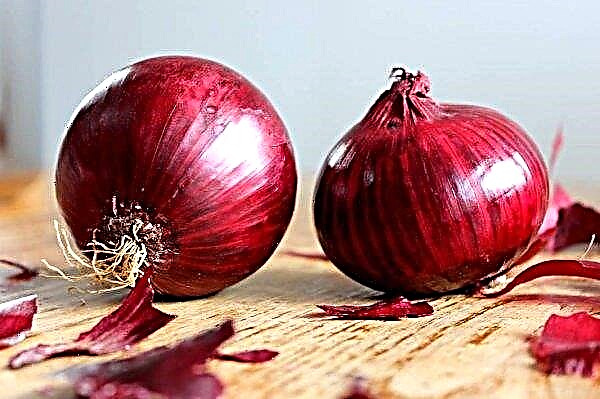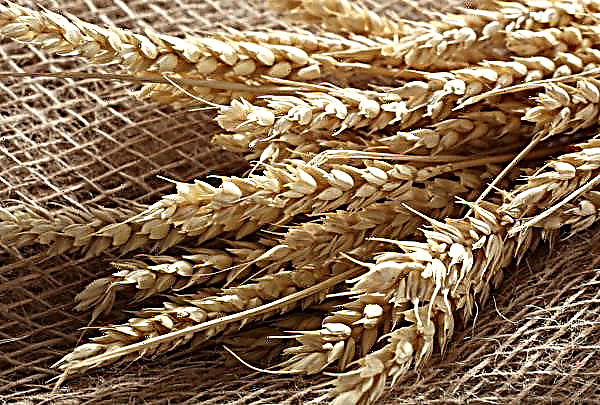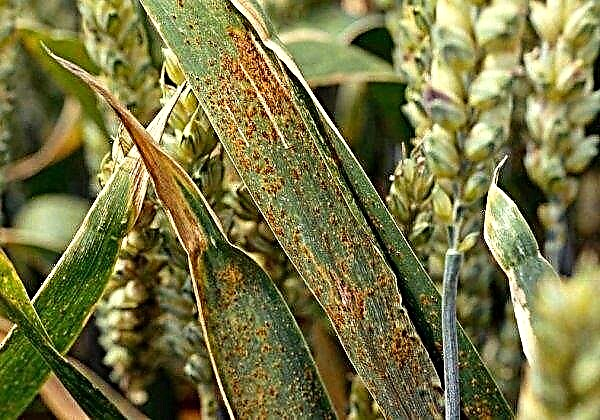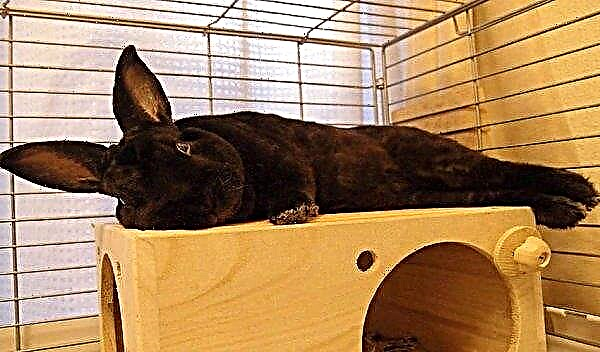Brown Honeysuckle is ideal for vertical gardening. Below is a detailed description of the plant, especially its cultivation, preparation for winter, as well as recommendations regarding cultivation in the suburbs.
Brown decorative honeysuckle type description
Honeysuckle - a representative of the genus erect, climbing or creeping shrubs from the family Honeysuckle. Its Latin name - Lonícera - the plant received in honor of the scientist Adam Lonitzer.

Selection history
The view was obtained in the 19th century by crossing two varieties of honeysuckle:
- evergreen;
- rough.
The resulting hybrid was characterized by brighter, more abundant and longer flowering. And the buds themselves resembled fuchsia flowers.
Appearance, characteristics of vines
The plant reaches a length of 2-3 m, and in breadth grows to 2.5 m. Young shoots are painted in green-blue color. The foliage is ellipsoidal, the upper side is green, the back is bluish. The leaves are located opposite each other and grow together at the base.
In autumn, the green mass does not fall completely, because the plant is classified as semi-evergreen. It blooms in early summer, about a month, after which it re-throws buds in August-September.
Flowers have the shape of a tube about 5 cm long, collected in inflorescences, painted mainly in red-orange hues, and, like the leaves, the outside is darker than the inside. The bush gives bright red fruits, inside of which a large number of seeds are located.
Important! Berries of this species are considered inedible, therefore, they are used only for decorative purposes.
Advantages and disadvantages of the species
- The advantages of the species include:
- decorativeness throughout the growing season;
- long and plentiful flowering;
- simplicity in cultivation;
- active growth;
- winter hardiness.
- As for the shortcomings, they are as follows:
- requires the construction of special supports;
- grows fast and requires regular pruning.

Agricultural technology
Honeysuckle refers to unpretentious plants that can be grown on any compound.
Seat selection
A well-lit place is allocated for landing, because a deficit of light negatively affects the number of colors. In this case, the root system should be in partial shade, which prevents excessive drying of the earth. Honeysuckle loves moisture, but does not tolerate waterlogging of the soil.
A site with sandy soil is well suited. An ideal soil mixture is made from earth, sand and peat in a ratio of 3: 1: 1. The place of growth should also be protected from drafts, which can destroy the plant.Did you know? The scent of honeysuckle flowers helps to cope with stress and nervousness.

Landing and care
Honeysuckle is planted in the spring, in a well-heated soil. This is because the culture has a late growing season. Furrows of 2 cm deep are preliminarily prepared, in which seeds are sown in an amount of 3-4 g with an interval of about 1 m.
If a young plant is used as planting material, it is necessary to prepare a hole measuring 50 × 50 × 50 cm. Drainage is filled with a layer of 5–7 cm, which is covered with soil mixed with sand and peat, in the ratio indicated earlier. The seedling is deepened to the level of the root neck.
A strong support is built for the plant, on which young shoots are evenly distributed. Please note that the honeysuckle is twisted counterclockwise. Upon reaching the required height, the liana is cut off, after which it begins to grow in breadth.
Nitrogen-containing substances are used as top dressing: 30 g of urea or ammonium nitrate are added to 10 l of water.
Check out

After fruiting, a solution of slurry is applied to the soil in the amount of 2.5 liters per 10 liters of water.
The plant responds well to watering, which is carried out about 4 times per season. About 10 liters of water are poured under each bush.
In drought conditions, the procedure can be carried out more often. After each event, the soil is loosened, while removing weed. Then the soil around the bush is sprinkled with mulch: humus, peat or sawdust.
Pest and Disease Control
Brown honeysuckle is one of the plants that is practically not affected by diseases, however, with improper care, the likelihood of development of powdery mildew increases.
The disease is characterized by the appearance of a white coating on the surface of the green mass, through which drops of moisture come out. For control and prevention in early spring, spraying with a solution of copper sulfate is used, calculated at 100 g per bucket of water.
Honeysuckle can also attack various kinds of insects:
To control pests, use a 0.2% solution of Chlorofos or a 0.3% solution of Karbofos, which spray the entire surface of the bush.
Pruning and shaping creepers
The first 5–7 years, it is necessary to carry out only sanitary pruning, removing damaged and dead parts. Further, the crown begins to thicken and requires additional events in the fall, after leaf fall, or in spring, in March-April. At the same time, they cut about 30 cm above the place of discharge of large stem shoots.
Important! Old bushes whose age has reached 15–20 years, it is better to rejuvenate completely - “on a stump”, observing a height of 0.5 m from the soil surface.
Wintering
Brown honeysuckle tolerates frosts down to -20 ° C, however, the plant must be prepared for winter. Lianas need to be removed from the supports and bent to the ground, laid on a peat pillow and covered with spruce branches.
Using
Due to the rapid growth of young shoots, as well as colorful and prolonged flowering, honeysuckle of all varieties, from Brown to Honeysuckle, are widely used both for ordinary landscaping of the courtyard and for creating whole compositions.

In landscaping
The simplest way is the vertical landscaping of the site. For this, special supports are built under the plant, about 2-3 m high and up to 2 m wide, or they have a landing near the facade of the house or gazebo. In addition to the decorative effect, the plant protects the walls of buildings from heat.
In landscape design
Honeysuckle perfectly complements any floral arrangements.
Using it in landscape design, you can build:
- Hedge. The plant can decorate any hedge, as well as visually divide the space in the garden.
- Trellis. To do this, you need to stretch the grid between the two pillars and put on top of the vine, which forms a green and blooming canopy.
In addition, the plant goes well with climbing roses, deciduous and coniferous shrubs.
Did you know? You can distinguish edible honeysuckle from inedible honeysuckle by color: black and blue berries can be eaten, and red and orange — no.
Brown Honeysuckle Varieties
Thanks to lengthy breeding work, a large number of varieties of this culture have been bred, the most popular include:
- Dropmore A plant of Canadian breeding, characterized by bright scarlet flowers with an orange core.
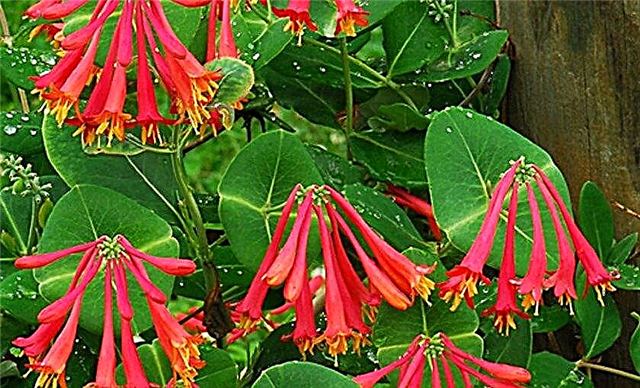
- Golden Trumpet Mintrum. Has flowers of copper-yellow color.
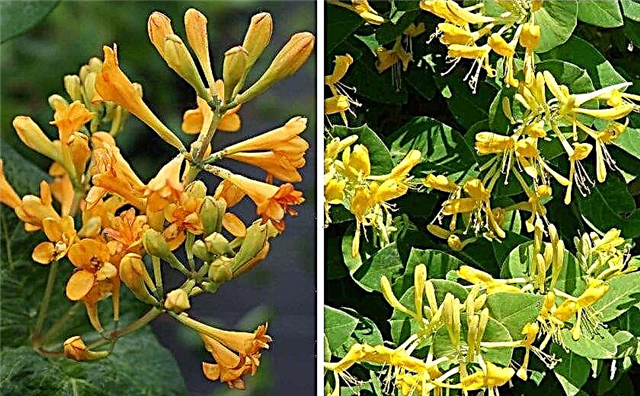
- Fuchsioides, also known as fuchsia honeysuckle. A fairly compact plant, with a height of not more than 2 m. It blooms with dark orange flowers.
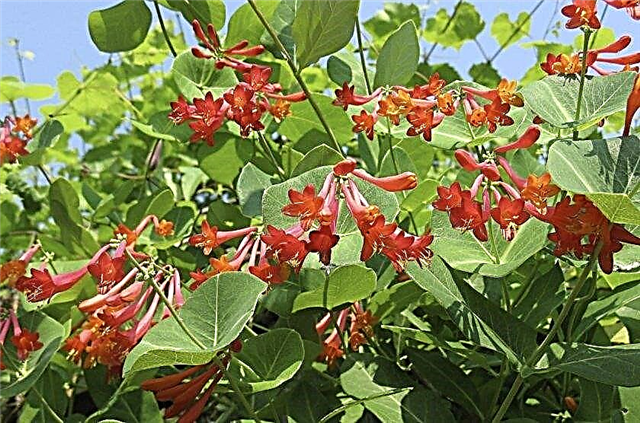
Features of growing in the suburbs
As for the cultivation of honeysuckle in the suburbs, the cultivation technology in this region has no differences from the above.
Honeysuckle is a semi-evergreen liana that can decorate any compound, not only landscaping it, but also pleasing with abundant and long flowering. The technology of its cultivation is quite simple, and the plant is unpretentious to the growing conditions.




